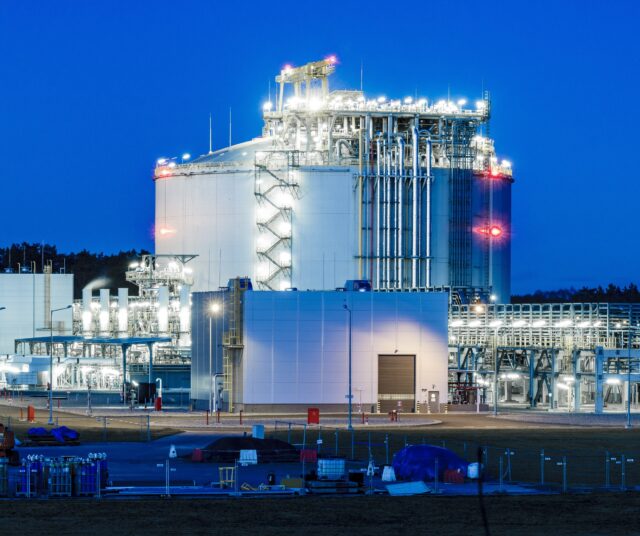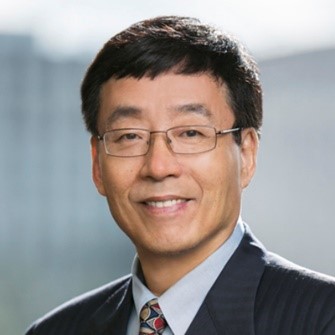THURSDAY, JANUARY 18, 2024 at Maggiano’s Little Italy, Memorial City Mall, 602 Memorial City Mall, Houston, TX 77024, Tel: (713) 461-0692
11:30 am – Social
11:45 am – Lunch
12:00 pm – Program
1. Click here to register!
2. Click here to make payment!
Abstract:
A full-containment tank system consists of two tanks—a primary tank (inner tank), constructed of metal, to store LNG, and a secondary container (outer tank), constructed of either metal or prestressed concrete, designed to maintain internal pressure, capable of containing LNG that may leak from the primary tank, and to resist external loads including blast, fire, and projectile impact. However, the current regulations in the U.S. require that if the outer tank wall is used as a storage tank impounding system, it must be constructed of concrete. The objective of this study is to determine whether a metal secondary container made of 9% Ni steel can provide an adequate level of safety and operational integrity comparable to that of an alternative concrete secondary container. This research aims to provide a better understanding of the ultimate capacity and resilience of a 9% Ni steel secondary container subjected to the aforementioned abnormal loads. The accidental loads considered for this study were determined from previous projects and literature using statistical methods. Two steel-steel full containment LNG tanks, a small and a large capacity LNG tank, were analyzed as part of our case studies. Detailed finite element models of both tanks were developed using ABAQUS, and nonlinear analyses were performed for the tank assessments. The response of the analyzed tanks was checked against the performance criteria developed as part of this study to evaluate structural integrity and leak tightness. Additionally, the response of the steel tanks was compared with that of a typical steel-concrete full containment LNG tank. Fragility analyses were performed to compare the failure probabilities for both steel and concrete tank types. This approach is expected to provide an enhanced basis for comparing the effectiveness of the two secondary containment types against accidental loads and viability of the metal secondary containments for full-containment LNG tank applications.
Presenters:
Madhav Parikh, Önder Akinci, Guzhao Li, Paul Summers, of Simpson Gumpertz & Heger
Bios:
Mr. Parikh is a licensed professional civil engineer with ten years of structural engineering experience. He has worked on numerous domestic and international EPC projects in the Oil & Gas industry. He has designed various steel and concrete plant structures, including process structures, piperacks, heater and reformer structures, and steel-clad buildings for both plant modifications and new facilities, many in high wind and high seismic regions. In recent years, Mr. Parikh has worked on investigations and failure analyses of elements and connections, wind and seismic evaluations of existing structures, and structural rehabilitation and repair designs. He has experience in design and evaluation of structures subjected to abnormal loads such as fire, blast, impact, and flood loads. Mr. Parikh is serving on the ASCE Energy Division Structural Fire Engineering Task Committee.
Dr. Onder Akinci specializes in design and assessment of structures, equipment and piping systems at Oil & Gas facilities and power plants. He has a Ph.D. degree in civil engineering from Purdue University. He has experience in analysis of structures and piping systems subject to extreme loads due to fire and blast. Dr. Akinci has published research and presented papers on a range of topics including resilient design of LNG facilities, blast and fire design of plant structures and piping systems, and passive fire protection (PFP) optimization. He performed plant walkdowns and PFP inspections at major Oil & Gas facilities, led R&D activities for development of PFP and cryogenic spill protection systems, and worked as owner’s engineer for LNG companies. Dr. Akinci is the chair of ASCE Energy Division Structural Fire Engineering Task Committee.
Dr. Li is a registered civil and structural engineer with over thirty years of experience in structural analysis and design. He has been involved in the analysis, design, and evaluation of both new and existing blast-resistant structures in petrochemical facilities and the design and evaluation of onshore and offshore structures subjected to wind, wave, current, earthquake, and blast loads. Dr. Li has recently served on the American Society of Civil Engineers (ASCE) task committees for wind, blast and seismic design at petrochemical and other industrial facilities. Dr. Li has expert knowledge in multiple structural design codes and specifications.
Mr. Summers is a Senior Principal and Structural Engineering Division Head at SGH with over forty years of experience in the analysis and design of industrial structures, buildings, tanks, and pipelines subjected to both static and dynamic loads, including those from extreme events such as blast, explosion, earthquake, high wind, fire, and flood. He is a registered professional and structural engineer and has served on several committees charged with developing design and evaluation criteria for both new and existing structures, including being the current chairman of ASCE task committees in the areas of wind and earthquake design of petrochemical and other industrial facilities.














